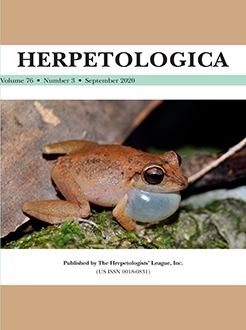Optimal escape theory states that animal prey counterbalance costs and risks before fleeing from predators. The theory seeks to explain the variation in distance between the predator and prey when the prey initiates flight (flight initiation distance [FID]). Although group living is commonly observed in the animal kingdom, it is not the predominant social behavior in squamates. Thus, studies of flight responses of grouped or social lizard species are very scarce. The Chilean lizard Liolaemus leopardinus is a highly social species and individuals of different age classes and sexes form social groups on rock outcrops where it is also common to observe solitary conspecifics. The flexible social behavior of L. leopardinus makes it a good model species to compare FID in solitary and grouped individuals. We measured escape behavior in solitary and grouped juvenile and adult L. leopardinus. We conducted trials on 61 solitary lizards and 14 grouped lizards (one focal individual in each group; maximum group size = 3). We found that FID, with basking habitat temperature (BHT) as a covariate, was significantly shorter in grouped L. leopardinus. This is a novel finding for a social lizard. The correlation between FID and distance to nearest refuge (DNR) was not significant, and DNR and BHT were not different between solitary and grouped lizards. In total, 38 lizards entered a refuge (29 solitary and 9 grouped individuals), mostly rock refuges. In this subsample, the correlation between distance fled and DNR was highly significant. The FID of those individuals that entered a refuge was not different than that of individuals that did not enter a refuge (with BHT as a covariate). Our finding that FID was shorter in grouped lizards was consistent with (1) a dilution effect that decreases individual risk of predation and/or (2) coincidental cooperation for indirectly enhanced threat detection. In the second interpretation, grouped lizards may spend less time vigilant and more time thermoregulating, waiting for some signal of enhanced predation risk by other individuals in the group.
How to translate text using browser tools
9 September 2020
Comparison of Escape Behavior Between Solitary and Grouped Liolaemus leopardinus Lizards from the Central Chilean Andes
Enrique Santoyo-Brito,
Herman Núñez,
William E. Cooper Jr.,
Stanley F. Fox
ACCESS THE FULL ARTICLE

Herpetologica
Vol. 76 • No. 3
September 2020
Vol. 76 • No. 3
September 2020
flight initiation distance
Leopard tree iguana
Liolaemidae
reptile
sociality
Squamata




